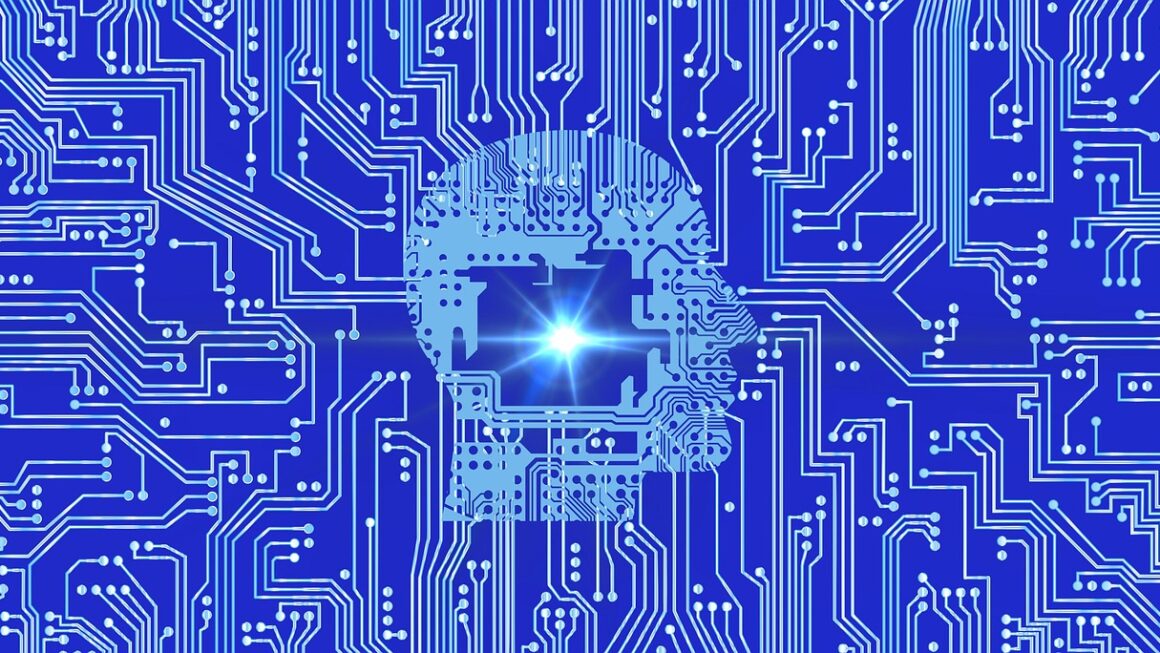Training an artificial intelligence (AI) model is a fascinating journey, a process akin to teaching a child. Just as a child learns through experience and repetition, an AI model learns by analyzing vast amounts of data and adjusting its internal parameters to make accurate predictions or decisions. But unlike teaching a child, AI model training involves complex algorithms, sophisticated hardware, and a deep understanding of data science principles. This post will delve into the intricacies of AI model training, providing a comprehensive guide for those looking to understand or implement this crucial process.
Understanding AI Model Training
What is AI Model Training?
AI model training is the process of teaching an AI model to perform a specific task by feeding it large datasets. The model analyzes this data, identifies patterns, and adjusts its internal parameters, or weights, to improve its performance over time. The ultimate goal is to create a model that can accurately predict outcomes, classify data, generate content, or perform other tasks with minimal errors.
- It’s an iterative process, requiring multiple rounds of training and refinement.
- The quality and quantity of the training data directly impact the model’s performance.
- Different AI models require different training approaches and techniques.
The Importance of Training Data
The quality and quantity of training data are paramount to the success of AI model training. “Garbage in, garbage out” is a common phrase in the field, highlighting the critical need for clean, relevant, and representative data.
- Quantity: Models, especially deep learning models, often require massive datasets (gigabytes or even terabytes) to learn effectively.
- Quality: Data should be accurate, consistent, and free of biases.
- Relevance: The data should directly relate to the task the model is designed to perform.
- Representation: The data should accurately reflect the real-world scenarios the model will encounter.
- Example: If you are training an image recognition model to identify different breeds of dogs, you need a dataset with a large number of high-quality images of various dog breeds, properly labeled and representative of the diversity within each breed. Skewed datasets (e.g., over-representing golden retrievers) will lead to biased and inaccurate models.
The AI Model Training Process
Data Collection and Preparation
This is the foundation of any successful AI model. It involves gathering relevant data from various sources and preparing it for the training process.
- Data Collection: Identifying and collecting data from internal databases, public datasets, APIs, or web scraping.
- Data Cleaning: Removing errors, inconsistencies, and missing values. This often involves imputation (filling in missing data) or removing corrupted data points.
- Data Transformation: Converting data into a suitable format for the model. This may include normalization (scaling data to a specific range), encoding categorical variables (converting text labels into numerical values), and feature engineering (creating new features from existing ones).
- Data Splitting: Dividing the data into three sets: training data (used to train the model), validation data (used to tune hyperparameters during training), and testing data (used to evaluate the final model’s performance). A common split is 70% training, 15% validation, and 15% testing.
- Example: For a natural language processing (NLP) model, data cleaning might involve removing punctuation, converting text to lowercase, and removing stop words (common words like “the,” “a,” “is”). Data transformation might involve tokenizing the text (splitting it into individual words) and creating a vocabulary.
Model Selection and Architecture
Choosing the right AI model architecture is crucial. Different models are suited for different tasks and data types.
- Supervised Learning: Models learn from labeled data (e.g., classification and regression). Examples include linear regression, logistic regression, support vector machines (SVMs), and decision trees.
- Unsupervised Learning: Models learn from unlabeled data (e.g., clustering and dimensionality reduction). Examples include k-means clustering, principal component analysis (PCA), and autoencoders.
- Reinforcement Learning: Models learn through trial and error, receiving rewards or penalties for their actions (e.g., game playing and robotics).
- Deep Learning: Models with multiple layers of artificial neural networks. These are particularly effective for complex tasks like image recognition, natural language processing, and speech recognition. Examples include convolutional neural networks (CNNs) and recurrent neural networks (RNNs).
- Example: For image classification, CNNs are generally the preferred architecture. For sequential data like text or time series, RNNs or Transformers are often used.
Training and Optimization
This is the core of the AI model training process, where the model learns from the training data and adjusts its parameters to minimize errors.
- Forward Propagation: Feeding the input data through the model to generate a prediction.
- Loss Function: Calculating the difference between the model’s prediction and the actual value (the “loss”). Common loss functions include mean squared error (MSE) for regression and cross-entropy for classification.
- Backpropagation: Propagating the error backward through the model to calculate the gradients (the direction and magnitude of change needed to reduce the loss).
- Optimization Algorithm: Using the gradients to update the model’s parameters. Common optimization algorithms include stochastic gradient descent (SGD), Adam, and RMSprop.
- Hyperparameter Tuning: Adjusting the model’s hyperparameters (parameters that are not learned during training, such as learning rate and batch size) to improve performance. Techniques include grid search, random search, and Bayesian optimization.
- Regularization: Techniques to prevent overfitting (when the model learns the training data too well and performs poorly on unseen data). Examples include L1 regularization, L2 regularization, and dropout.
- Early Stopping: Monitoring the model’s performance on the validation set and stopping the training process when the performance starts to degrade.
- Example: Using a learning rate scheduler, which dynamically adjusts the learning rate during training. Initially, a higher learning rate allows for faster progress, but as the model converges, a lower learning rate helps to fine-tune the parameters and avoid overshooting the optimal solution.
Model Evaluation and Refinement
Once the model is trained, it needs to be evaluated on the testing data to assess its performance.
- Evaluation Metrics: Choosing appropriate metrics to measure the model’s performance. Examples include accuracy, precision, recall, F1-score, and area under the ROC curve (AUC).
- Error Analysis: Identifying patterns in the model’s errors to understand its limitations and areas for improvement.
- Model Refinement: Retraining the model with different data, model architectures, or hyperparameters to improve its performance.
- Example: If the model performs poorly on a specific class in a classification task, it might indicate that the training data for that class is insufficient or biased. Collecting more data for that class and retraining the model could improve its performance.
Tools and Technologies for AI Model Training
Hardware Accelerators
AI model training, especially deep learning, can be computationally intensive. Hardware accelerators can significantly speed up the training process.
- GPUs (Graphics Processing Units): Highly parallel processors that are well-suited for matrix operations, which are fundamental to deep learning.
- TPUs (Tensor Processing Units): Custom-designed hardware accelerators developed by Google specifically for deep learning workloads.
- Cloud Computing: Using cloud platforms like AWS, Azure, and Google Cloud to access powerful computing resources on demand.
Software Frameworks
Various software frameworks provide tools and libraries for building and training AI models.
- TensorFlow: An open-source machine learning framework developed by Google.
- PyTorch: An open-source machine learning framework developed by Facebook.
- Scikit-learn: A Python library for machine learning that provides a wide range of algorithms and tools for data analysis and model building.
- Keras: A high-level API for building and training neural networks that can run on top of TensorFlow, PyTorch, or other backends.
MLOps (Machine Learning Operations)
MLOps is a set of practices for automating and streamlining the entire machine learning lifecycle, from data collection to model deployment and monitoring.
- Model Versioning: Tracking different versions of the model and their associated data and hyperparameters.
- Automated Training Pipelines: Automating the training process, including data preprocessing, model training, and evaluation.
- Continuous Integration and Continuous Deployment (CI/CD): Automatically deploying new versions of the model to production.
- Model Monitoring: Monitoring the model’s performance in production and detecting any degradation in accuracy or other metrics.
Challenges in AI Model Training
Overfitting and Underfitting
- Overfitting: The model learns the training data too well and performs poorly on unseen data. This can be addressed through regularization, data augmentation, and early stopping.
- Underfitting:* The model is too simple to capture the underlying patterns in the data. This can be addressed by using a more complex model or adding more features.
Bias in Training Data
- Biased training data can lead to biased models that perpetuate and amplify existing inequalities.
- It’s crucial to carefully examine the training data for potential biases and address them through data augmentation, re-weighting, or other techniques.
Computational Cost
- Training large AI models can be computationally expensive, requiring significant hardware resources and time.
- Techniques like distributed training and transfer learning can help reduce the computational cost.
Interpretability and Explainability
- Many AI models, especially deep learning models, are “black boxes,” making it difficult to understand how they make decisions.
- Developing more interpretable and explainable AI models is crucial for building trust and ensuring accountability.
Conclusion
AI model training is a multifaceted process that requires a strong foundation in data science, machine learning, and software engineering. By understanding the key steps involved, the challenges, and the available tools and technologies, you can effectively train AI models to solve a wide range of problems and unlock the power of artificial intelligence. The key takeaways are: Data quality and quantity are paramount. Choosing the right model architecture is critical. Continuous monitoring and refinement are essential for long-term success.




